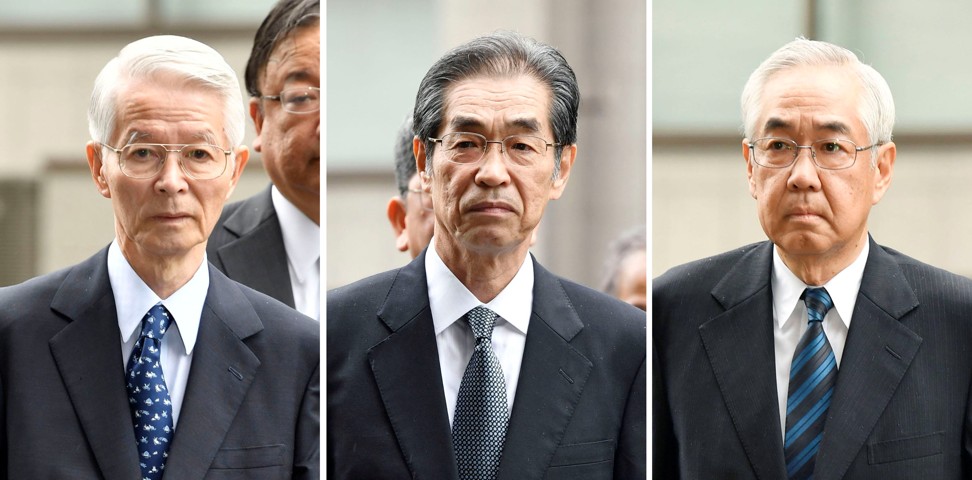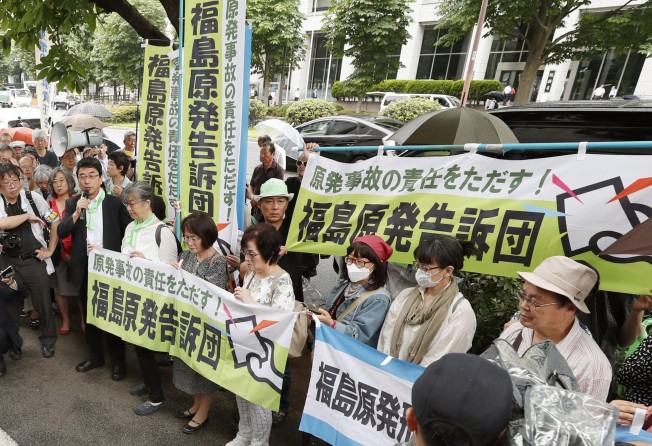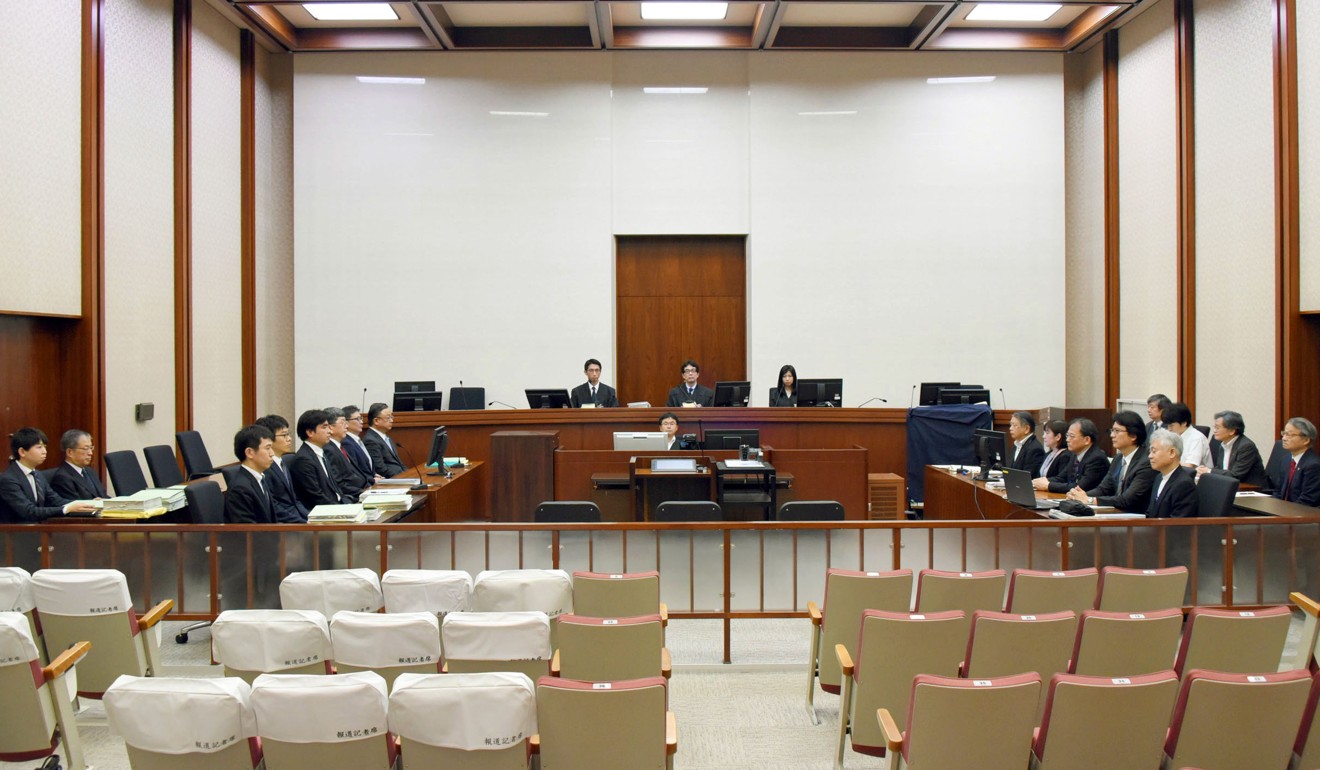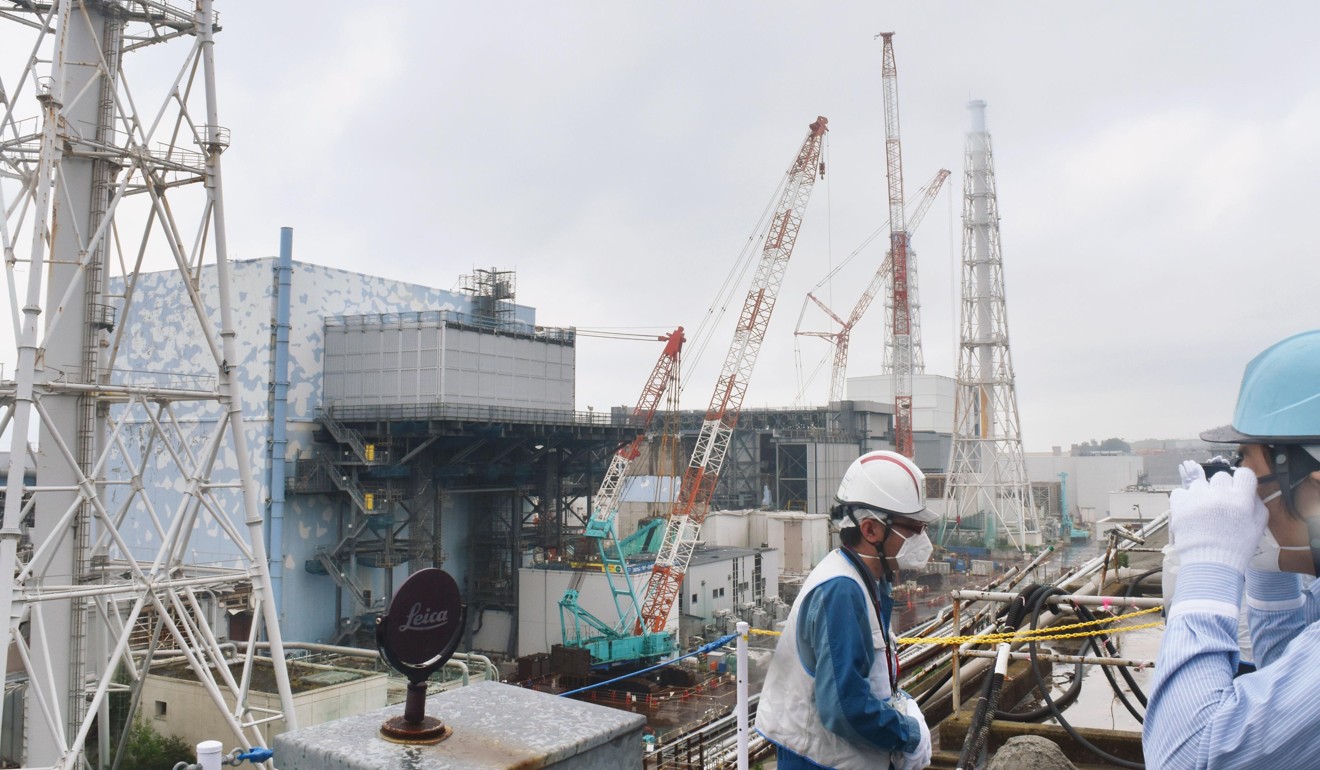
Former bosses of Fukushima disaster nuclear plant stand trial

Three former executives from the operator of Japan’s tsunami-stricken Fukushima nuclear plant went on trial on Friday, the only people ever to face a criminal court in connection with the 2011 meltdowns that left swathes of countryside uninhabitable.
Ex-Tokyo Electric Power (Tepco) chairman Tsunehisa Katsumata, 77, and former vice presidents Sakae Muto, 66, and Ichiro Takekuro, 71, all pleaded not guilty to charges of professional negligence resulting in death and injury, more than six years after the worst atomic accident in a generation.

Katsumata told the Tokyo court it was impossible for him to have directly foreseen the risk of the towering waves that pummelled Japan’s northeast coast in March 2011.
“I apologise for the tremendous trouble to the residents in the area and around the country because of the serious accident that caused the release of radioactive materials,” Katsumata said in a barely audible voice, as he bowed. “I believe I don’t have a criminal responsibility in the case”.

The indictments are the first – and only – charges stemming from the tsunami-sparked reactor meltdowns at the plant that set off the worst atomic crisis since Chernobyl in 1986.
If convicted, the men face five years in prison or a penalty of up to 1 million yen (US$8,900).
“Since the accident, nobody has been held responsible nor has it been made clear why it happened,” said Ruiko Muto, head of the group that pushed for the trial, outside Tokyo District Court on Friday morning. “Many people have suffered badly in ways that changed their lives. We want these men to realise how many are feeling sadness and anger.”

The prosecutor told the court on Friday he would try to prove that the three defendants were able to foresee the risk of a huge tsunami and failed to take necessary steps to counter the risk.
The trio were present at safety meetings where quake and tsunami experts presented the anticipated height of a tsunami occurring off the Fukushima coast, he said.
The defendants had access to data and studies anticipating the risk of a tsunami exceeding 10 metres in the area that could trigger power loss and severe accidents, he added.
If they had neglected the studies and failed to take precautionary measures, that alone is a violation of nuclear safety rules, he told the court.

“If they had fulfilled their responsibility to safety, the accident would have never occurred,” the prosecutor said.
An earlier report by a government panel said Tepco simulated the impact of a tsunami on the plant in 2008 and concluded that a wave of up to 15.7 metres could hit after a magnitude-8.3 quake.
Waves as high as 14 metres swamped the reactors’ cooling systems in March 2011 after a 9.0 magnitude tremor.
Although the quake-tsunami disaster left some 18,500 people dead or missing, the Fukushima accident itself is not officially recorded as having directly killed anyone.
The charges against the three Tepco executives are linked to the deaths of more than 40 hospitalised patients who were hastily evacuated from the Fukushima area and later died.

Today, many evacuees are still living in other parts of Japan, unable or unwilling to go back home as fears over radiation persist.
A 2015 report by the International Atomic Energy Agency said a misguided faith in the safety of atomic power was a factor in the accident, pointing to weaknesses in disaster preparedness and unclear responsibilities among regulators.
A parliamentary report a year after the disaster said Fukushima was a man-made crisis caused by Japan’s culture of “reflexive obedience”.